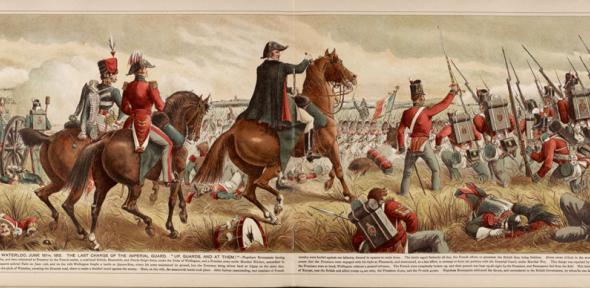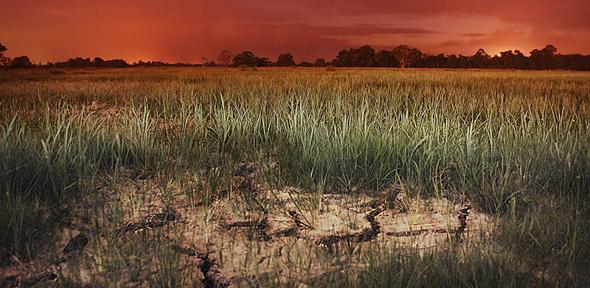In the Elizabethan play Wily Beguiled, a character named Will Cricket boasts that women find him attractive because he possesses “a sweet face, a fine beard, comely corpse, and a carousing codpiece”. Wonderful things have been said about the codpiece, not least in response to the television dramatisation of Hilary Mantel’s Wolf Hall. Explaining the deliberate downsizing of Thomas Cromwell’s codpiece, actor Mark Rylance opined that modern audiences, especially in America, “may not know exactly what’s going on down there”.
An item of male dress that was briefly de rigeur some five centuries ago, the codpiece both covered, and drew attention to, a part of the anatomy that couldn’t even be mentioned in polite society. Writing in the 1580s, the French philosopher Michel de Montaigne (translated by Donald Frame) summed up the curious case of the codpiece as “an empty and useless model of a member that we cannot even decently mention by name, which however we show off and parade in public”.
![]() At a conference later today (30 April 2015), Victoria Miller, a PhD candidate in the Faculty of History, will offer new insights into the popularity of a must-have item for the man about town, with a special focus on references to the codpiece in European literature as well as representations in early modern portraiture and prints.
At a conference later today (30 April 2015), Victoria Miller, a PhD candidate in the Faculty of History, will offer new insights into the popularity of a must-have item for the man about town, with a special focus on references to the codpiece in European literature as well as representations in early modern portraiture and prints.
Miller’s dissertation investigates the militaristic influences found in civilian male dress in 16th century Italy and Germany, and the codpiece is a prevalent component of her research. At a conference on history and gender, she will propose a novel explanation for its seemingly rapid demise in the last quarter of the 16th century when it shrank to a shadow of its former self, before disappearing completely by 1600.
Fashions can be charted in terms of upward and downward movements as well as shifts in emphasis from one part of the body to another. The historical consensus on the origin of the codpiece is that it was devised to fill a gap and, initially at least, preserved men’s modesty. From these practical beginnings, the codpiece (‘cod’ was slang for scrotum) became a fashion item in its own right.
In the 15th century men’s dress comprised doublet or tunic (worn on the top half of the body), hose (bottom half) with a mantle or cloak (worn over the outfit). Hose were two separate wool or linen leggings that fastened into the doublet, rather in the style of fisherman’s waders. As doublets became shorter, and the length of mantles also decreased, the tell-tale bulge (or more) of gentlemen’s privy parts became evident beneath their under-shirts.
“It’s hardly surprising that this revealing style was not to everyone’s taste – and that moralists were quick to condemn it,” says Miller. In a sermon of 1429 (translated by Michael J Rocke), San Bernardino of Siena admonished parents who kitted their sons out in “a doublet that reaches only to the navel [and] stockings with a little piece in front and one in back, so that they show a lot of flesh for the sodomites”. In 1463 in England, Edward IV’s parliament made it compulsory for a man to cover “his privy Members and Buttokes”.
Pictorial and textual evidence suggests that the early codpiece was constructed from a triangular shaped piece of cloth called a ‘braye’. The bottom tip of the triangle was stitched to the hose and the remaining corners fastened to the doublet to form a kind of gusset. This soft triangular flap was superseded by a stuffed and padded shape designed to hold what Montaigne coyly called “our secret parts” and John Florio’s Italian-English dictionary lists as “pillcocke or pricke”.
Masculinity was big in 16th century Europe – along with notions of chivalry, honour and romance. Codpieces were speedily hijacked for the purpose of proving masculinity in the most blatant of manners. The most elaborate versions were singularly showy and portraits show that in the mid-16th century the codpiece reached epic (if not priapic) proportions. No expense was spared: codpieces were made in luxury silk velvet, bejewelled or embroidered. Even young boys were obliged to wear them.
Miller says: “Ideas about masculinity were closely linked to notions of martial strength. The defensive codpiece was an integral part of the costume worn by German and Swiss mercenaries. On the battlefield, the armour codpiece was both protective and assertive.” In a satirical text by French author Francois Rabelais, a character asserts that men’s genitals require great protection in battle just as nature has equipped nuts and seeds with “belles et fortes braguettes naturelles”.
There are few extant codpieces. Rare survivors include the metal versions made to wear with suits of armour (Henry VIII’s armour codpiece is on display at the Tower of London) and the prettified wool and velvet codpieces adorning the ‘plunderhosen’ of Svante Stensson Sture and his two sons in Sweden’s Uppsala Cathedral.
Costume historians have long argued that the codpiece fell from favour as the result of the vogue for femininity that swept through the French and English courts. Elaborate ruffs and ballooning breeches heralded a shift in focus to the face and hips. “It’s evident in the late-16th and early 17th-century portrait miniatures of decorous young men by Nicholas Hilliard and similar painters that the style of men’s fashion was taking a new direction,” says Miller.
However, fashion is more subtle than we think. Drawing on detailed investigation of contemporary sources, Miller argues that codpiece entered a third – and hitherto overlooked – phase in its evolution. During the last quarter of the 16th century, she suggests that the codpiece was squeezed downwards and diminished in size, and then finally supplanted, by the emergence of another trend known as the ‘peascod’ belly.
“The peascod was a style of doublet constructed by skilful use of padding and stuffing to achieve a rounded and tapering look akin to the fecund shape of a peapod ripe for picking,” she says.
“Both fashions protruded and competed for the same bodily real estate – the codpiece was reduced to accommodate the peascod. The markedly subtler version of the codpiece possessed a smaller silhouette an![]() d was often hidden by the billowing breeches on either side. Even in the northern countries, where it was not uncommon to see bows ornamenting the codpiece, this later version remains relatively concealed.”
d was often hidden by the billowing breeches on either side. Even in the northern countries, where it was not uncommon to see bows ornamenting the codpiece, this later version remains relatively concealed.”
Miller’s research suggests that the peascod was as imbued with notions of virility as the codpiece. The two are often mentioned together, and compared, in early modern texts. “The peapod was a potent sexual symbol, likened to male genitalia. Moreover, the pea field was a convenient spot for canoodling and the phrase ‘shelling peas’ was employed as a euphemism for sexual intercourse. In Thomas Ingelend’s 1570 play The Disobedient Child, a character after mishearing his colleague confusedly asks ‘…with my madame laye in the peeas?’,” she says.
“An exploration of handkerchief designs in The Fair Maid (1607) by the historian Juana Green shows that the peapod motif was not just a virility symbol but could also represent betrothal, marriage and fertility. I think it’s fascinating that both styles possessed strong sexual connotations. However, I’m also interested in exploring their subtle differences – and how these two distinct fashions were read by contemporaries.”
Exaggerated peascod doublets became, like codpieces, the object of mockery. In a poem from 1580 the Cambridge scholar Gabriel Harvey derides the use of “largebellid kodspeasid dubletts, unkodpeasid halfhose”. Also in the 1580s, the moralist George Stubbes declared: “Now what handsomenesse can be in these Doublets, which stand of their bellies as big or much bigger than a mans codpiece.”
Some 30 years later Robert Hayman wrote in his poem Two Filthy Fashions:
Of all fond fashion, that were worne by Men.
These two (I hope) will ne’r be worne againe:
Great Codpist Doublets, and great Codpist britch,
At seuerall times worne both by meane and rich:
These two had beene, had they beene worn together,
Like two Fooles, pointing, mocking each the other.
There’s ample historical evidence that men have always agonised about their masculinity – and especially the question of size. A late 15th century manuscript entitled Detti Piacevoli recounts the following joke (translated by Barbara Bowen): “A woman was asked what kind of penises women preferred, big or small or medium-sized. She answered: ‘Medium ones are the best.’ When asked the reason, she replied: ‘Because there aren’t any big ones’.”
Fashion is all about communication. “We use dress to construct an outward image of our perceived inner selves. The items we choose to adorn ourselves with are loaded with complex cultural messages.” says Miller. “For me, the interesting thing about 16th century male fashion is the way in which it reveals what was important to men at this time – their preoccupation with masculinity, military prowess and virility.”
Victoria Miller will be presenting her paper this evening (30 April 2015) at Emmanuel College.
Inset images – Portrait of a Young Man, credit Wikimedia Commons; Portrait of Antonio Navagero, credit Wikimedia Commons.




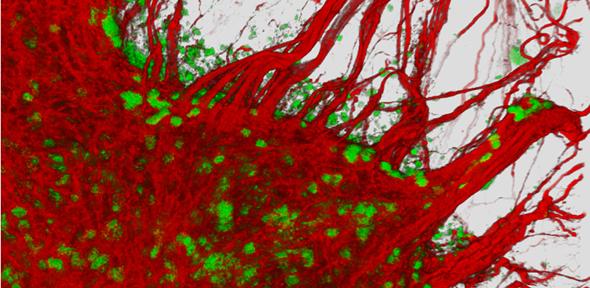







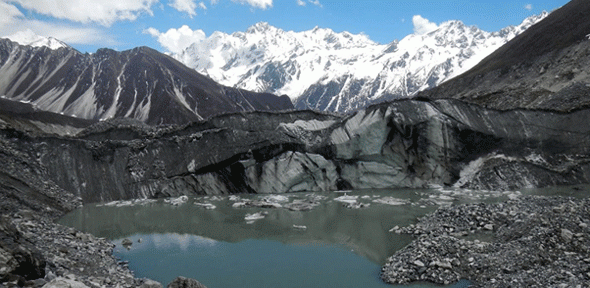
 The full scale of the damage will become clear as contact is made with remote settlements away from the capital, which are now largely cut off from communication and supply. In Kathmandu and other urban centres, the greatest cause of injury and death was collapsing buildings.
The full scale of the damage will become clear as contact is made with remote settlements away from the capital, which are now largely cut off from communication and supply. In Kathmandu and other urban centres, the greatest cause of injury and death was collapsing buildings.

 Our field research is on hold at present while we wait to hear the fate of the people of the Langtang Valley and other remote regions of Nepal. But initial reports from Langtang sound very bleak. Eye witness accounts state “
Our field research is on hold at present while we wait to hear the fate of the people of the Langtang Valley and other remote regions of Nepal. But initial reports from Langtang sound very bleak. Eye witness accounts state “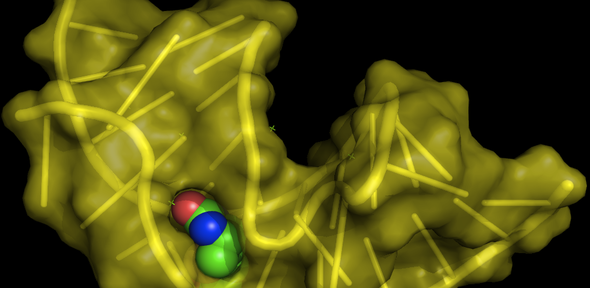


 At a conference later today (30 April 2015), Victoria Miller, a PhD candidate in the Faculty of History, will offer new insights into the popularity of a must-have item for the man about town, with a special focus on references to the codpiece in European literature as well as representations in early modern portraiture and prints.
At a conference later today (30 April 2015), Victoria Miller, a PhD candidate in the Faculty of History, will offer new insights into the popularity of a must-have item for the man about town, with a special focus on references to the codpiece in European literature as well as representations in early modern portraiture and prints. d was often hidden by the billowing breeches on either side. Even in the northern countries, where it was not uncommon to see bows ornamenting the codpiece, this later version remains relatively concealed.”
d was often hidden by the billowing breeches on either side. Even in the northern countries, where it was not uncommon to see bows ornamenting the codpiece, this later version remains relatively concealed.”


